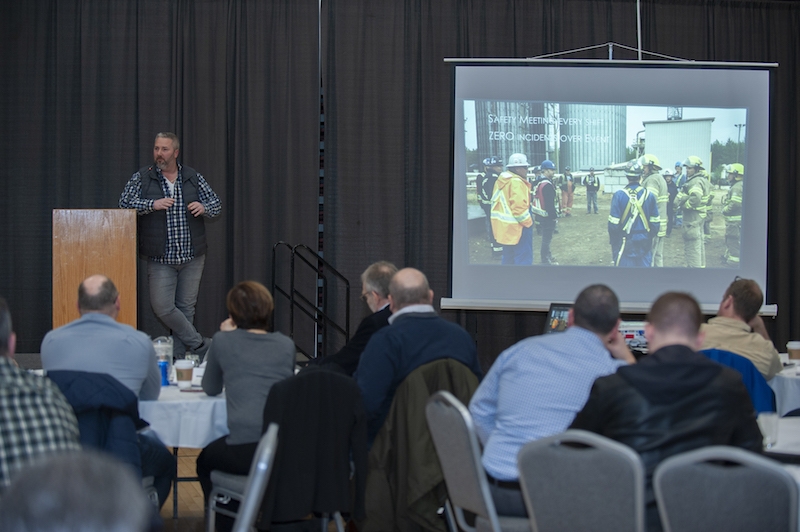
6 takeaways from the wood pellet silo fire workshop
February 21, 2019
By Gordon Murray and Fahimeh Yazdanpanah
 Shawn Bells
Shawn Bells The Wood Pellet Association of Canada (WPAC) held the workshop Silo Fires – Prevention and Response at the Prince George, B.C., Civic Centre on Feb. 14. This workshop was produced in co-operation with WorkSafeBC and media partner Canadian Biomass. Sixty-five participants included pellet plant operators, maintenance personnel, and representatives from insurance companies, universities, fire detection equipment suppliers, and WorkSafeBC. Notably, a large contingent of fire-rescue personnel from Prince George and Quesnel participated too.
In 2017, Pacific BioEnergy Corporation pellet plant in Prince George experienced a silo fire. By employing industry-leading practices, the company turned a frightening situation into a success. Over several days, company crews and first responders used nitrogen injection to extinguish the fire and safely empty the silo. There were no injuries sustained. This incident was described more fully in an October 2017 Canadian Biomass article.
Although Pacific BioEnergy’s performance was essentially a textbook case of how to properly manage a silo fire, WPAC and WorkSafeBC realized that not every silo fire would have such a positive outcome. There are many famous examples of poorly managed silo fires that ended in catastrophe. Thus, we decided to organize a workshop for industry and fire-rescue personnel.
Silo fire expert Henry Persson of the RISE Research Institute of Sweden was the keynote speaker. Author of the seminal Silo Fires – Fire extinguishing and preventive and preparatory measures, Henry Persson is renowned worldwide as a top expert on silo fires with more than 30 years of experience.
Shawn Bells, vice-president of Pacific BioEnergy, walked the audience through the events surrounding the company’s 2017 silo fire, demonstrating that company personnel and Prince George firefighters had followed all of Persson’s recommendations.
Silo fires are unique and require a different approach than conventional fires. For example, using water for fire extinguishing will actually worsen the situation because wood pellets will swell and potentially cause a silo to burst. And opening a silo to access a fire is likely to cause an explosion, so fire fighting must take place while crews are essentially blind to what is occurring inside the silo.
The workshop agenda covered silo firefighting procedures, nitrogen supply and injection equipment, foam injection, silo discharge, personal safety considerations, alternative extinguishing tactics, spontaneous ignition versus external ignition, review of silo types, silo fire prevention methods, mobile gas equipment, first responder training, case studies and risk management.
The key takeaways from the various speakers included:
- When dealing with a wood pellet silo fire, personnel must minimize air entrainment, which means do not open the silo. Inject nitrogen to the silo, ideally using gas distributors.
- In the case of fire due to self-heating, remove the product slowly and minimize the disturbance of the remaining product.
- Rather than rushing into suppressing a silo fire, take sufficient time to plan before taking action. It is essential to have a sold strategy in place starting the firefighting process.
- As a pre-planning measure, discuss the potential for a silo fire with the local fire department. Develop a firefighting strategy in advance so everyone knows what to do should a fire occur.
- Access the risks associated with the silo fire. Identify and examine the critical controls of preventing a silo fire. Invest time and look at all critical controls in a structured way.
- Build, communicate and practice an emergency response plan.
Next up: we are planning for our annual Wood Products Safety Summit to be held on June 11, 2019 at the Prince George Civic Centre. Stay tuned.
Print this page

















